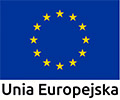On 29th of January 2020, at the IPN’s Janusz Kurtyka Educational Center “History Point” the sculpture exhibition: “The Image of Treblinka in The Eyes of Samuel Willenberg” was opened.
Samuel Willenberg (1923-2016) was born in Częstochowa. In 1942 he dwelt in the Opatów Ghetto, from where, together with the others Jews, was transported to Treblinka. Impersonating bricklayer he managed to avoid death inside a gas chamber. He was the prisoner of the Treblinka Extermination Camp for 10 months. On the 2nd of August 1943 he participated in the revolt at the camp and escaped with several hundred others. He took part in the Warsaw Uprising. After the capitulation of the capital he joined the underground resistance and became a Polish soldier. In 1950, together with his mother and wife, he emigrated to Israel. He worked as a geodesist for 40 years. After retiring, Willenberg completed formal studies in the field of fine arts and started to sculpt. Traumatic memories from the camp became the constant element of his life:
[Treblinka] “It is with me, I sculpt it, think about it, dream about it, it is with me, always!” Said Willenberg.
Keeping in memory his professor Mering’s words, who was his history teacher, Willenberg decided to go through the hell of Treblinka with a view to giving testimony about the truth of Treblinka to the world. He did that in various ways: making sketches of the Extermination Camp, taking part in documentary films, telling stories about his experiences, working with the youth and sculpting. Sculpting was one of his form of emotional outlet. The art was helping him to cope with what he experienced. The Willenberg’s exhibition carries an important message. Bronze sculptures depict actual people who Willenberg met in Treblinka and who was suffering and been savagely humiliated. Those people – being at the point of death – are “frozen” in the bronze sculptures made by Samuel Wilenberg. Their purpose is to keep reminding us of the cruelty of the Holocaust. Those sculptures shout so as not to let that happen again.
Exhibition includes 15 absorbing sculptures depicting dramatic scenes of routine life in the extermination camp, i.e. Jews leaving the wagons at the Treblinka’s platform (bronze, 2000), corpses taking out of a train (bronze, 2001), a father untying a child’s shoes (bronze, 2002), a disabled person before getting into the “Lazaret” (bronze, 2002), the revolt in the camp on 2nd of August 1943 (bronze, 2002-2003), a prisoner sorting belongings of the victims (bronze, 2001-2012).
Ada Krystyna Willenberg, the widow of Samuel Willenberg, was the guest of honour. She guided the guests around the exhibition explaining in detail what respective sculptures depict and the process of making them. Willenberg was crying while sculpting. The Chairman of the Institute of National Remembrance Jarosław Szarek was talking about the alloy made of sufferance, tears and bronze.
Many distinguished guests took part in the event. The representatives of the Jewish community along with Poland’s Chief Rabbi Michael Schudrich, Polish Righteous Among the Nations and representatives of state authorities were present: on behalf of the President of Poland – Dr Barbara Fedyszak-Radziejowska; the Deputy Speaker of the Polish Sejm Małgorzata Kidawa Błońska; MPs Anita Czerwińska and Marek Suski, Deputy Minister of Culture and National Heritage Jarosław Sellin and Deputy Minister of Foreign Affairs Paweł Jabłoński were also present at the event.
The Deputy Minister of Culture Jarosław Sellin read out a letter from the Prime Minister of Poland Mateusz Morawiecki. The inauguration of the sculpture exhibition made by Samuel Willenberg is not only a reminding sign of inconceivable Treblinka’s crime, but also a testimony of the history witness who out of concern for the truth devoted his life to making sure that the truth is known. Deputy Minister of Culture added that, “Poland is, and must be, the keeper of memory. We have been forced to do it, because there is something on the territory of Poland that certainly can be called as the <<German heritage>>. Those are Extermination camps, which all were placed within the borders of Poland. Apart from one (…). With this in mind, Poland, make further decisions that provide constant care of those places”.
Jarosław Selin reminded that Treblinka is the place of remembrance and Poland takes particular care about that, “I think that we will have been able to invite you to visit the new museum in Treblinka by 2023, which will be dedicated to the extermination camp. I know that was the Samuel Willenberg’s will, (…) so that these sculptures be displayed in Treblinka – the place where he experienced all this.
During the gala evening the documentary “Treblinka’s Last Witness”, which tells the story of Samuel Willenberg, was screened. Exhibition may be seen at the IPN’s Janusz Kurtyka Educational Center “History Point” in downtown Warsaw till the end of March 2020. Then the exhibition will further visit others cities in the country and at the end of that will become the essential part of the new museum building in Treblinka.
The delegation of the Treblinka Museum headed by the Director of the Treblinka Museum Edward Kopówka also took part in the official opening of the exhibition.





